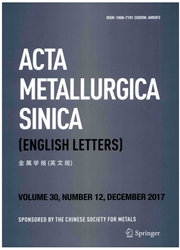

 中文摘要:
中文摘要:
在在在中国的 Yingtan 的酸的土壤的模仿的答案的 X70 管道钢的裂开的压力腐蚀(SCC ) 用慢紧张率测试(SSRT ) 被调查, SEM 和 potentiodynamic 极化技术。实验结果显示 X70 钢高度产生使用了潜在的还原剂的 SCC,它在坚韧和易碎的骨折的损失被表明。经常的极化电流能检测 SCC 的出现。更低极化水流是很快,压力腐蚀裂开发生。SCC 机制在改变潜力是不同的。当潜力比开的电路潜力高时,,当潜力比开的电路潜力远低时,阳极的过程控制 SCC, cathodic 过程控制 SCC,并且在这二个潜力之间区域,一个联合电气化学的过程控制 SCC。应力或紧张让 synergistic 与电气化学的反应完成加速 cathodic 氢进化过程,它使 X70 管道成为钢更产生 SCC。
 英文摘要:
英文摘要:
Stress corrosion cracking (SCC) of X70 pipeline steel in simulated solution of the acidic soil in Yingtan in China was investigated using slow strain rate test (SSRT), SEM and potentiodynamic polarization technique. Experiment results indicate that X70 steel is highly susceptible to SCC as applied potential reduces, which is manifested in loss of toughness and brittle fracture. Constaat polarization current can detect the occurrence of SCC. The lower the polarization current is the sooner stress corrosion cracking occurs. The SCC mechanisms are different at varying potentials. When potential is higher than open circuit potential, anodic process controls SCC, whereas when potential is far lower than open circuit potential, cathodic process controls SCC, and between these two potential regions, a combined electrochemical process controls the SCC. Stress or strain has a synergistic effect with electrochemical reactions to accelerate the cathodic hydrogen evolution process, which makes the X70 pipeline steel to be more susceptible to SCC.
 同期刊论文项目
同期刊论文项目
 同项目期刊论文
同项目期刊论文
 期刊信息
期刊信息
